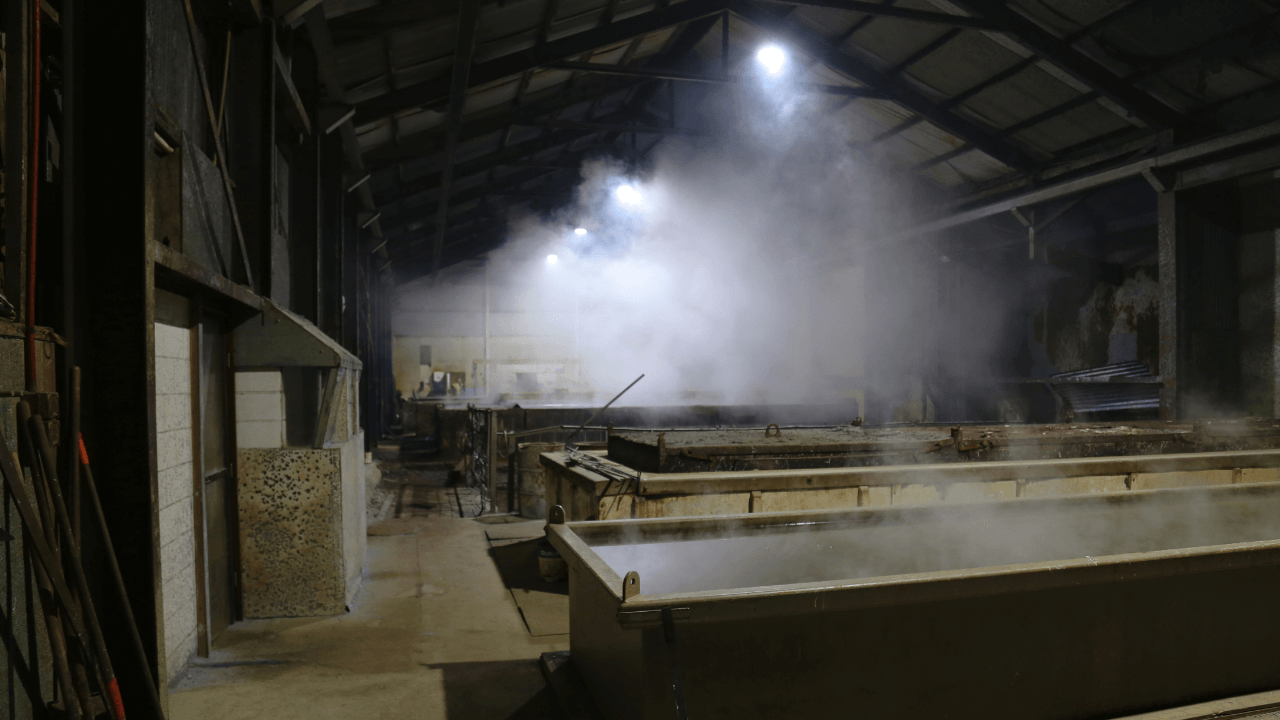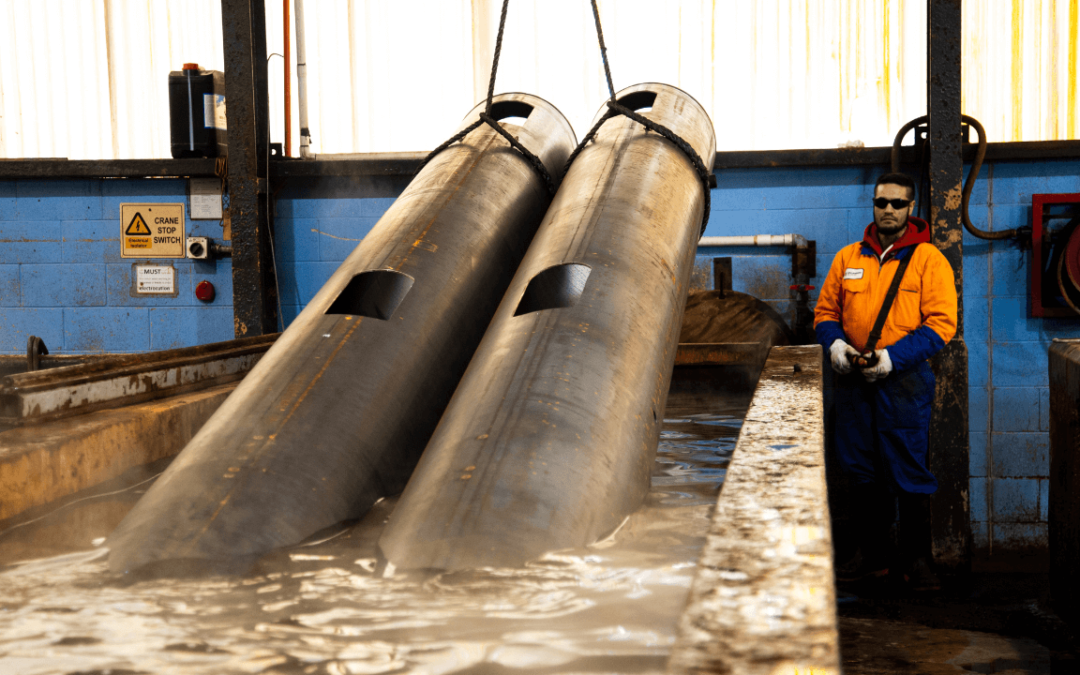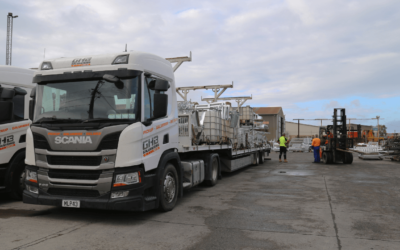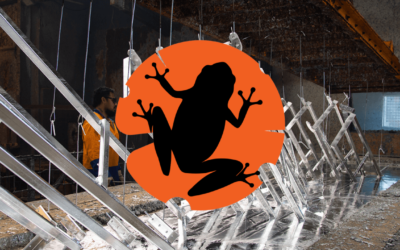One of the most common requests from people not overly familiar with galvanising sounds simple enough at face value, however, is not as straight forward as it might seem:
“Can you double dip our steel to give it a thicker and more heavy-duty coating?”
While this request seems logical and well-intentioned, it highlights a very common misconception in the hot dip galvanising world. Many still believe that immersing an item twice in molten zinc will result in a thicker coating and therefore provide better and longer lasting protection. Unfortunately, that’s not actually how galvanising works and the science behind why is well researched and evident.
This article has been written to help clear up any confusion and explain what ‘Double Dipping’ actually means (and what it doesn’t).
To understand why ‘Double Dipping’ isn’t what it seems, first we need to understand what happens during the galvanising process.
When a steel item is hot dip galvanised, it’s immersed in a bath (often referred to as a kettle) of molten zinc at temperatures around 450 – 460°C. During this immersion, and at the right temperature a metallurgical reaction takes place between the iron in the steel and the molten zinc, forming a distinct series of zinc-iron alloy layers topped with an outer layer of free zinc.
This reaction occurs once the steel reaches the temperature of the zinc bath. For steel with low silicon content (below 0.05%), the galvanising process is essentially complete within minutes, however with larger and thicker items it can take quite a bit longer till it reaches the melted temperature of Zinc for the metallurgical reaction to occur. The final coating thickness is primarily determined by the steel’s chemical composition, the immersion time and the overall steel’s surface condition and thickness.

When an item is withdrawn from the bath, it carries with it an outer layer of free zinc. If it is then re-immersed back into the molten zinc, rather than it adding a 2nd outer layer of zinc (like many would assume), the initial outer zinc layer will in fact remelt, leaving only the underlying alloy layers. From this point, the galvanising method proceeds as if the item was never withdrawn the first time. The resulting galvanised coating at the end of the second dip (assuming equal times of immersion), is only marginally thicker than the original coating, however as it also consists of a higher proportion of alloy it now has an increased tendency for brittleness.
In other words, double dipping to increase coating thickness is largely ineffective and may even negatively impact the external coating integrity, its visual appearance and its longevity.
So what exactly is ‘Double Dipping’ and why is it used so much if it’s not as good as one may think?
The term double dipping (or more accurately, progressive dipping) has a very specific and valid use in the galvanising industry. However, unknown to many, it doesn’t actually refer to two full immersions in the zinc baths as many assume, but rather the method of galvanising used on oversized steel fabrications that are too large to fit into the bath in a single dip.
How ’Double Dip’ galvanising works on oversized items:
1. The item is partially dipped into the zinc bath, coating the immersed portion only.
2. The item is then withdrawn, repositioned and then the remaining uncoated portion is dipped.
3. This process ensures full coverage on items that exceed the bath’s dimensions, whether than be in in length, width or depth. Examples of this include long beams, girders, deep tanks or other complex fabrications with varied angles.
4. For a visual explanation of how this works check out our “Will it fit calculator” inside the GHB app.
Key considerations when ‘Double Dipping’
While ‘Double Dipping’ can be very useful for oversized items, it does also come with some unique challenges and factors worth considering:
- Overlap lines: Where the two dips meet, there will be a slight overlap of zinc coating. On exposed structural steel, this may be visible at first but typically fades over time. For architecturally exposed steelwork, it’s best to discuss expectations with your galvaniser beforehand.
- Added cost: Double dipping an item typically adds approx. 30 – 70% more cost over a single dip, given the extra time, handling and zinc required.
- Handling & suspension: The item must be safely suspended and manipulated across multiple angles. Proper design considerations and rigging support are essential to not only ensure optimal results but also safety.
- Distortion risk: Dipping a large or awkwardly shaped fabrication more than once increases the risk of distortion. This is particularly important for fabricated items with thin sections or delicate assembly areas as they can create dissimilar thicknesses.
- Draining & safety: Effective draining from multiple angles is not just a quality concern, but a safety one. Trapped zinc or moisture can cause defects and if not setup correctly can be very hazardous during the galvanising process.

Other alternatives to ‘Double Dipping’ for thickness
If your goal is to achieve a thicker galvanised coating, there are often other options available than just requesting a
second dip:
- Select appropriate steel: Silicon-containing steels react more aggressively with zinc, resulting in naturally thicker coatings (though care must be taken due to increased brittleness).
- Increase immersion time: Within practical limits, a slightly longer immersion can contribute to a thicker coating however can have visual detriment as a result.
- Design for the process: Simplifying geometry or ensuring compatibility with bath sizes can save time and reduce the need for complex handling.
- Use a larger galvanising kettle: If available, galvanising the entire item in one go using a larger kettle avoids the need for ‘Double Dipping’ altogether.
‘Double Dipping’ is an effective galvanising technique used for oversized items, but it’s not actually a special trick for achieving thicker coatings as many may think.
When done correctly, it allows large or awkwardly shaped fabrications to be fully protected by zinc, however it can in fact lead to brittleness (especially in silicon-containing steels) and instead where possible a carefully timed single immersion has been proven to produce optimal results without compromising quality, durability, strength and longevity.
So next time you’re tempted to order an extra heavy coating by ‘Double Dipping’, have a chat with us first. Galvanising HB has the longest galvanising kettle in New Zealand and because of this we can often find a smarter more effective solution, often at a lower cost than having to use a traditional ‘Double Dip’ procedure like that used on oversized items.
Check out our latest articles
Mythbusters – 9 Little Galvanising Porkies!
The process of galvanising and protecting steel from corrosion has been around for well over 100 years now. So, it’s not surprising there are a few misconceptions that have snuck in over that time.
How A Twitching Frog’s Leg Sparked A Revolution In Galvanising!
Who would’ve thought a twitchy frog leg could lead to one of the most enduring industrial innovations of all time? Hot dip galvanising, the robust process that has protected steel for over 180 years, owes part of its origin story to the curious observation of a frog’s post-mortem jig.


